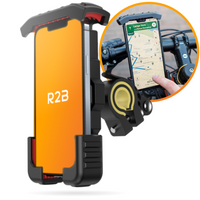Introduction to the subject
Wooden toys have a nostalgic charm that makes them a timeless classic. Homemade wooden toys are not only durable, but also unique and full of personal value. Making wooden toy cars can be a fun and satisfying do-it-yourself (DIY) activity that appeals to both adults and children.
The importance and benefits of homemade wooden toys
Making your own wooden toys offers several advantages:
-
Durability : Wooden toys last longer than plastic and are less prone to breakage.
-
Creativity : It offers the opportunity to bring your own designs and ideas to life.
-
Safety : You have control over the materials and finishes used, which allows you to make toys safer for children.
-
Environmentally friendly : Wood is a renewable resource and has a smaller carbon footprint compared to plastic toys.
In this blog you will learn how to make your own wooden toy cars step by step. We will discuss the materials and tools needed, guide you through the preparation steps, and provide detailed instructions for cutting, shaping, and finishing your wooden car. We conclude with some tips for successful execution and how to add your own personal touches.
Section 1: Materials and Tools Required
Materials
To make a wooden toy car, you will need the following materials:
-
Wooden planks or blocks : Choose sturdy, splinter-free wood such as beech, maple or birch. Avoid wood with knots or cracks.
-
Wood glue : For firmly connecting the different parts.
-
Paint and varnish (optional, for finishing) : Use child-friendly, non-toxic paint and varnish to give your car a nice finish.
Are you looking for a reliable timber trade ? Then check out the Baxhout website!
Tools
For this project you will need the following tools:
-
Saw (hand saw or jigsaw) : To cut the basic shapes of the car from the wood.
-
Drill and drill bits : For making holes for the wheels and other details.
-
Sandpaper or sander : To smooth the wood and remove sharp edges.
-
Brush (for paint and varnish) : For applying finishing layers.
Section 2: Preparation
Selection of wood
-
Types of wood suitable for toys : Beech, maple, and birch are excellent choices because of their strength and fine grain. These types of wood are less susceptible to splinters and provide a smooth finish.
-
The importance of choosing safe, splinter-free wood : Safety is essential, especially if the toy is intended for children. Make sure the wood has no knots, cracks or rough edges. Choose wood that has been properly dried to avoid deformation.
Designing and planning
-
Making sketches of your desired car design : Start by making simple sketches of your car design. Consider the shape of the chassis, the cabin and any other details such as fenders and bumpers.
-
Determine basic dimensions and design : Determine the dimensions of your car based on the sketches. Take into account the size of the wheels and the proportions of the different parts. It is helpful to make a template that you can transfer to the wood.
Section 3: Cutting and Shaping the Parts
Marking and cutting
-
Marking the wood according to the designs : Use your template to draw the outline of the car on the wood. Make sure all parts are clearly marked.
-
Safe sawing techniques for cutting out the basic shapes : Cut the marked shapes from the wood with a hand saw or jigsaw. Work slowly and carefully to make precise cuts. If possible, use a vice to hold the wood firmly in place while cutting.
Shaping and rounding
-
Sanding the edges for a smooth finish : Sand the edges of the cut-out shapes with sandpaper or a sander. Start with coarse sandpaper to soften the edges and finish with fine sandpaper for a smooth finish.
-
Forming details such as the cab and fenders : Use the saw and sandpaper to form details such as the cab, fenders and any other features. Take the time to make each part neat and precise.
With this extensive elaboration you can now start making your own wooden toy car. In the following sections we will discuss assembly, finishing and decoration, as well as some additional tips and safety considerations.

